The five for five challenge
We are no longer building saddle trees, but we have two videos about how Western saddles fit horses available on our westernsaddlefit.com website.
There’s been a 5 for 5 challenge going around Facebook lately asking people to post five pictures of their work a day for five days in a row. We were asked to participate, and here’s what we posted. Then I did an extra day, just for fun…
First day of five for five. Thought I would start off with swell forks for the first day.
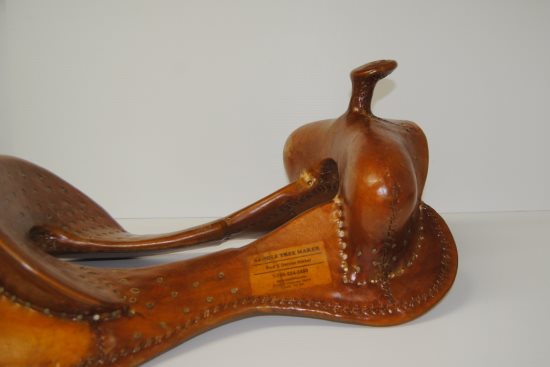
This one is an Arizona Roper. A shot from this angle shows the backsweep on this style of fork.
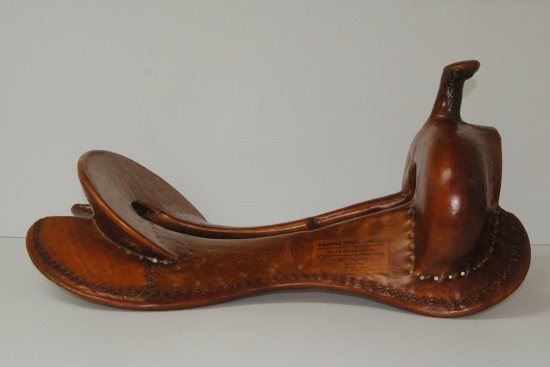
Here's a Buster Welch. While most forks are either stood up or leaned ahead, this is a fork style we do both ways. This is a stood up fork, but the customer wanted the horn leaned ahead, so that is what he got.
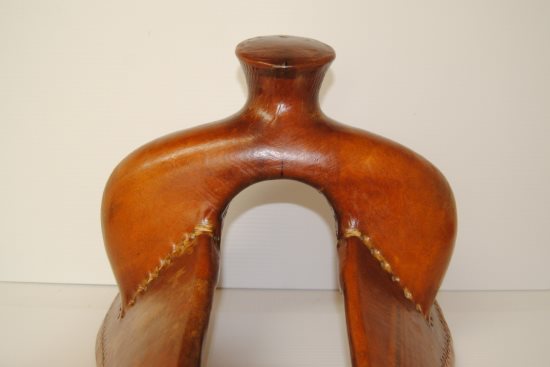
The High Country pattern was designed by the late Matt Eberle to be a fork style he could cover quite easily without welts. The original pattern was 12 1/2" wide, but even Matt modified that on occasion. It looks nice with either a metal horn or a wood post horn, and we build a fair number of both.
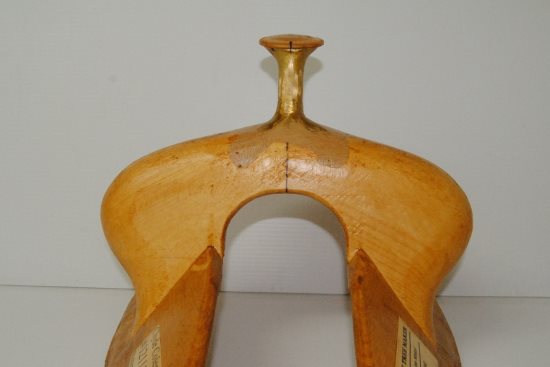
The Modified Association is probably the most common swell fork that we make. This one is 13" wide, but 14" is also very common. From the back you can't see the hardwood we have in the middle of the fork, but the screws attaching the horn are screwed right into it. This is what it looks like in the wood before we cover it with rawhide.
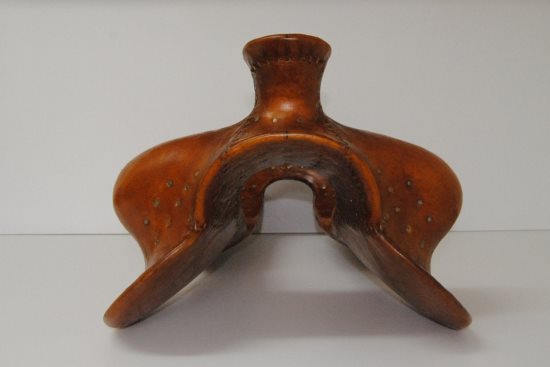
We have probably made more wood post Will James trees than metal horn Will James. It seems to be a style that lends itself to having a wood post horn. This one is 14" wide.
Day 2 - and I get to post pictures of Wade trees today. Still our most popular style. This also gives me a good opportunity to show exactly what makes a Wade, a Wade.
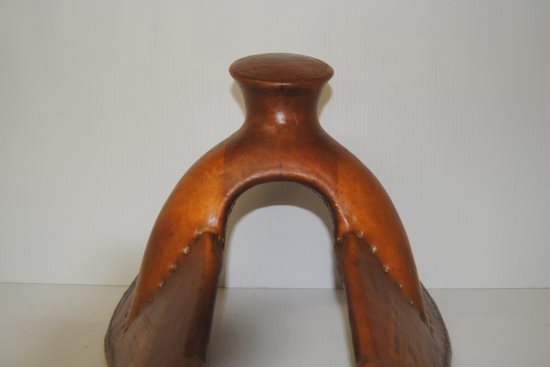
A Wade tree is a slick fork. While the "width" may vary (this one is an 8 1/2"), it is always widest at the bottom of the fork - which is the definition of a slick fork.
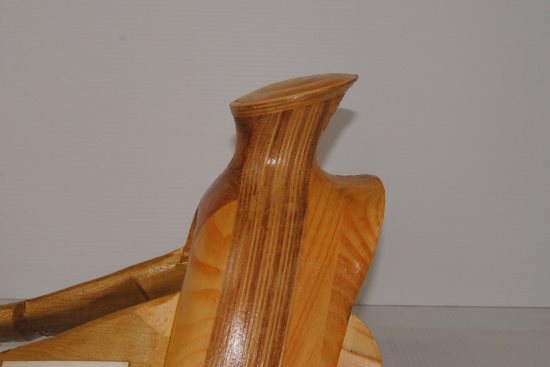
It has a wood post horn, which should be an integral part of the fork, not added later. If it has a metal horn, it ain't a Wade, no matter what label someone hangs on it. We use solid birch plywood through the middle with maple on the back. You don't have to worry about what you rope on these ones!
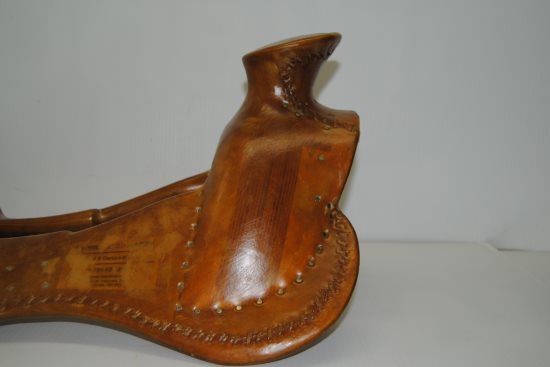
A Wade has a thicker stock than most trees, traditionally being 5" as this one is. (Stock thickness is the measurement front to back of the fork.) The size of the horn relative to the fork changes the look a fair amount. The one is 3" high with a 4" cap - makes a nice looking fork.
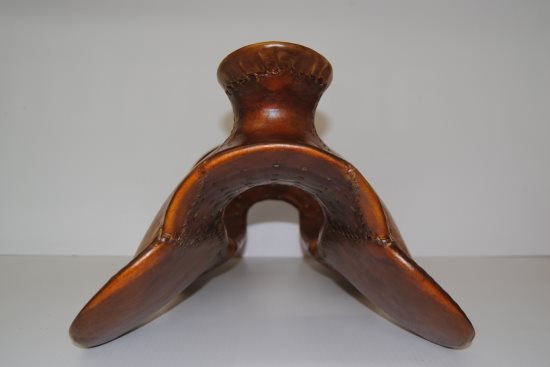
The gullet on a true Wade is thin. Because you don't need room for screws holding down a metal horn, the gullet can be much thinner on a wood post fork (7/8" difference on our trees). This allows the base of the horn to get closer to the horse while still allowing for clearance in the gullet. This is the biggest advantage for the horse when roping off a Wade tree.
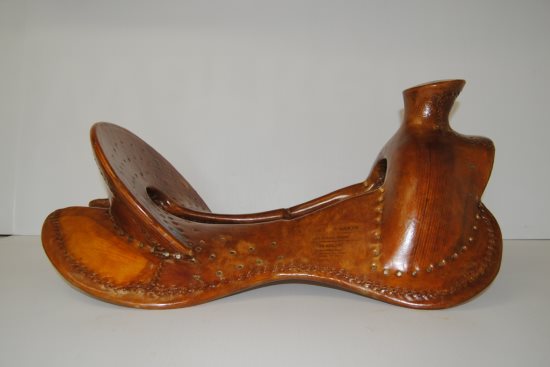
A Wade tree can have any kind of cantle specs or fit for the horse you like and need. The definition applies primarily to the fork. But it sure makes for a classy looking tree.
Day 3 - Today is slick fork day!
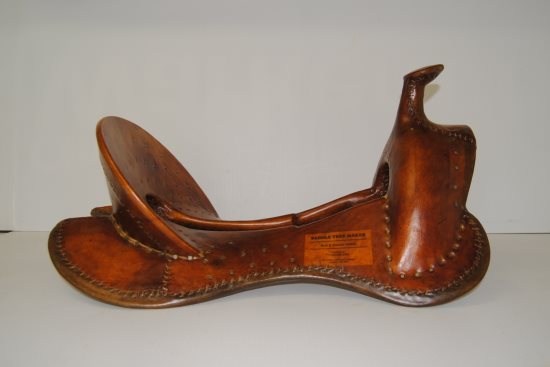
This is a more unusual slick fork tree. The customer wanted the fork stood up, and the cantle 5 1/2" tall and stood up to 42 1/2 degrees. It came out looking really good and made for a really nice old-timey rig.
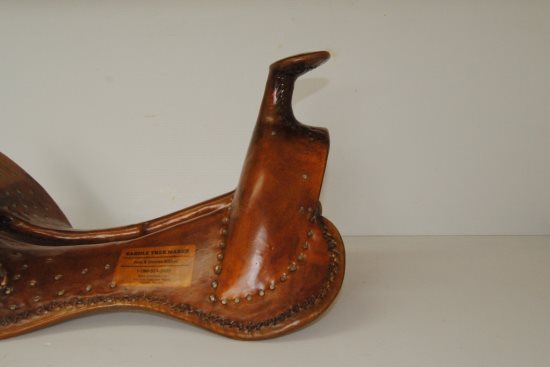
Here's a Visalia style 3B with only 3 1/2" stock. The horn cap size on this tree is 3", which is quite large for a metal horn fork, especially one this narrow.
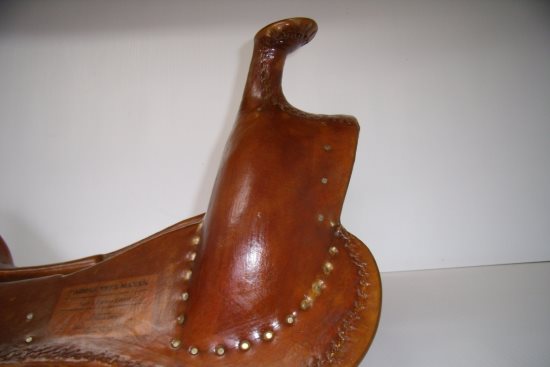
This one is a Taylor style with 4 1/2" stock thickness. Cap size on this one is 2 1/2". The relationship between cap size and stock thickness really affects the final look of the tree.
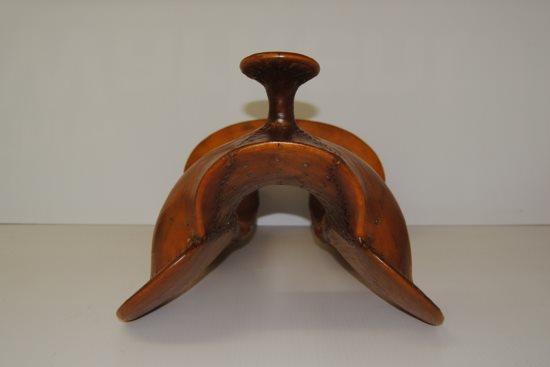
Slick forks come in different widths. This one is a 10", which is as wide as it gets before they become swell forks. From the front you can also see that the gullet is thicker than on a wood post fork because you need thickness in there for the screws to hold the horn on. This means that the gullet has to be higher on metal horn slick forks than wood post ones to get the same clearance under the gullet.
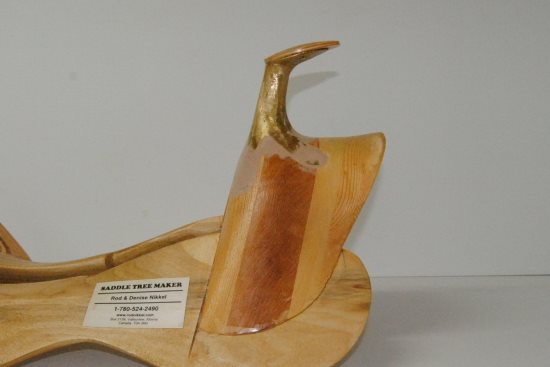
Here's a Meana style slick fork with a 5 1/2" stock thickness in the wood. The horn on this tree is called the Old Timer. We sent a horn off an old saddle down to Herb Bork and asked if he could make one like it. He told us he didn't have to as he had already made a mold for another customer. These work great on slick fork trees, but the feet on them won't fit on swell forks.
Day 4 - Today we're going fancy. Exposed wood always looks nice!
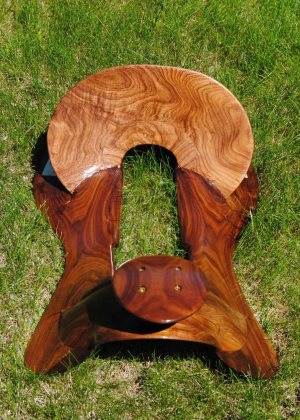
This is a full walnut tree made to be used in a riding saddle. No really hard use is anticipated. Kind of a fun project!
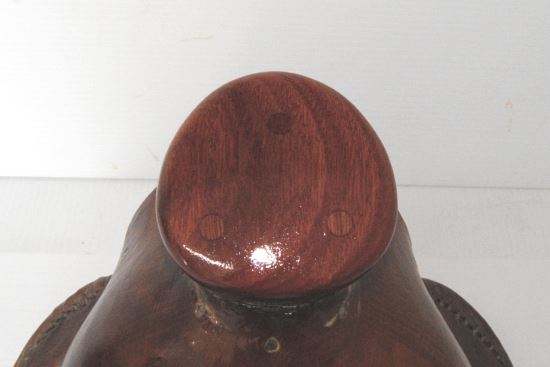
We've made a fair number of exposed wood horn caps by now. We have found Jarrah wood to be a good choice. Nice grain and we have some out there now that have stood up to years of cowboy use. (We don't guarantee them against breakage though...)
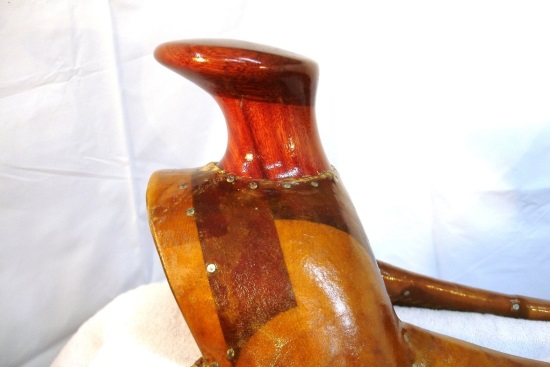
Here is a fully exposed horn and cap for a strictly riding saddle. No roping here! You can see through the rawhide that the wood of the neck also makes up part of the fork, the same way all our wood post horns are constructed.
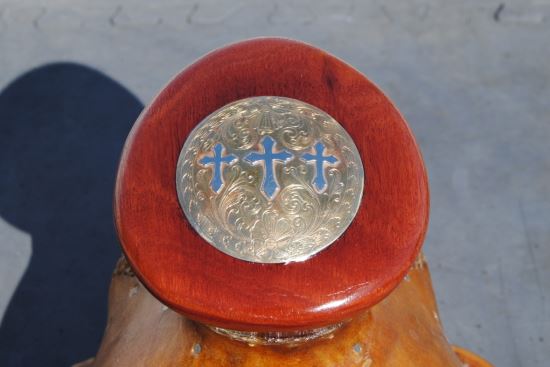
A lot of exposed wood horns also have special horn caps or silver on them. On occasion, the customers send us the caps to install here. It is neat to be able to see the finished product in real life.
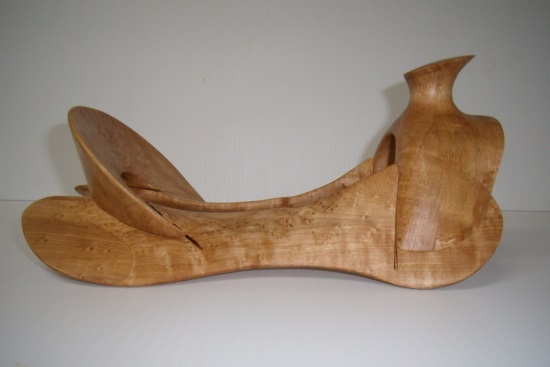
This is a half sized tree we made for fun from bird's eye maple. It is just a shelf ornament, but it's sure cute. It has a few of the customer's special alternations that he asks for in his full size trees incorporated into the design.
Day 5 - For the last day, we decided to post some different styles of trees we have had the pleasure of building. These ones definitely took some extra work to figure out and to build, but it is always good to have a challenge now and then!
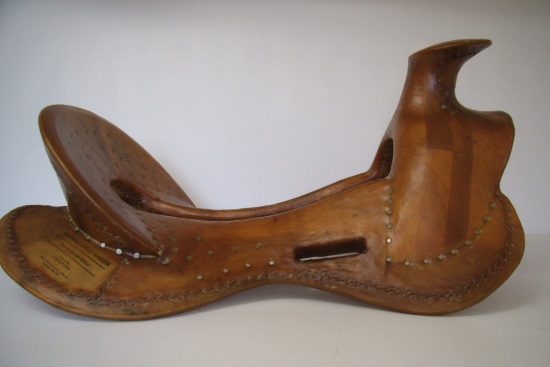
This is a Hope style saddle tree with stirrup slots as per the customer request. They went for a bevel cantle but no cantle slots.
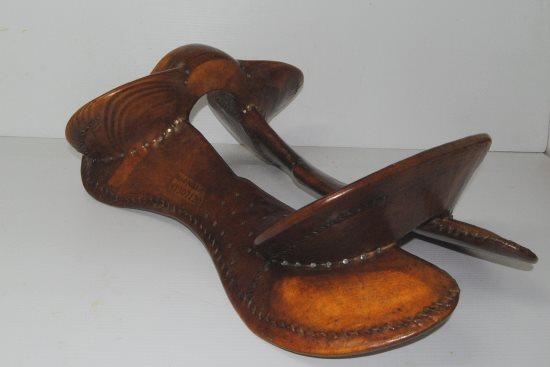
Thanks to help from Dennis Lane, we have built a couple of these. While North Americans generally call them Aussie saddles, the Aussies call them Western Stock saddles: Western - as in western style with bars instead of panels, and Stock - as in Australian Stock Saddle. Putting on a backwards leaning fork is a challenge...
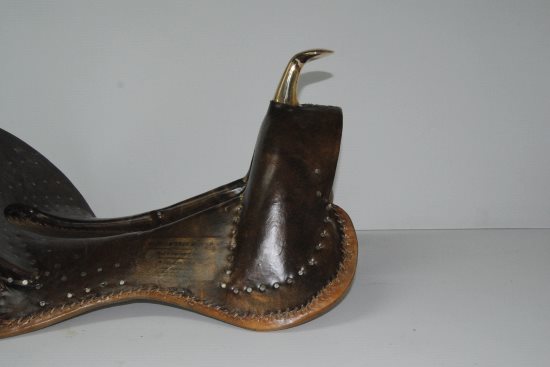
Here's a fancy polished bronze horn. Not a lot special in building the tree other than polishing the horn when it is done, but they sure look nice when they are finished!
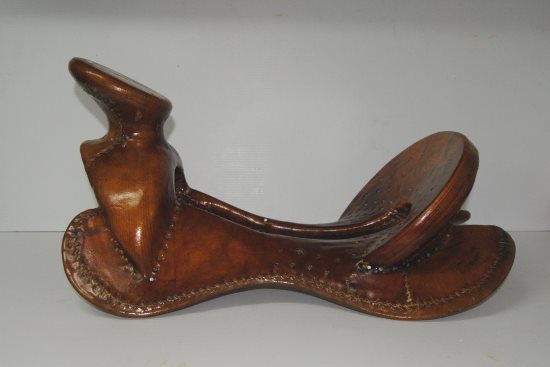
Charro trees seem to get a lot of interest. This one is only 11 1/2" wide so it didn't even need side seams. The 16 3/4" wide one sure did. (Yeah, there's a lot of variation in these...) This tree was ordered without cantle slots, though charro trees often have them.
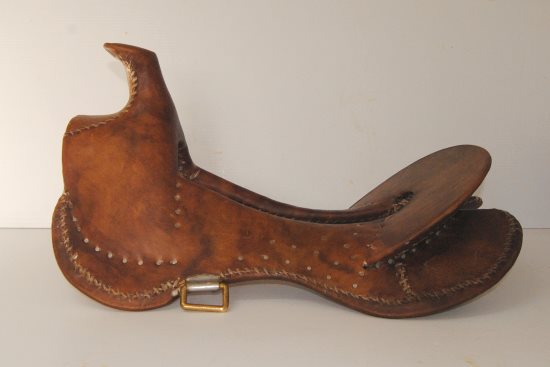
We have done the occasional reproduction style tree. Here is a Pony Express tree we built for reinactors. They wanted it as authentic as possible, so they didn't want varnish on the rawhide. Making a cantle with no dish and that laid back took some figuring. We've done a few trees with the stirrup hangers like this as well.
We're finished the five for five with the trees, but I wanted to show off the couple saddles that Rod has built too, just for fun... Ten years between the two. First one built in 2003, second in 2013.
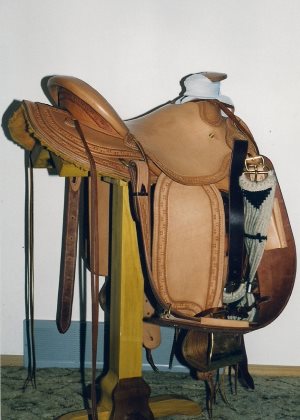
This is the 2003 saddle.
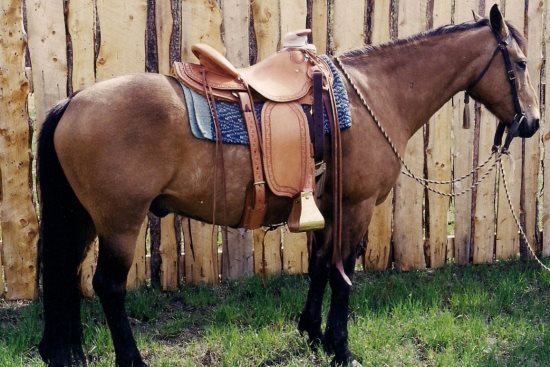
Rod built this one so that the fenders could go really short for visiting nieces and nephews. Here they are let out to pretty much maximum for Rod's leg length. A much more versatile arrangement than his Tubb saddle with the lace up stirrup adjustment...
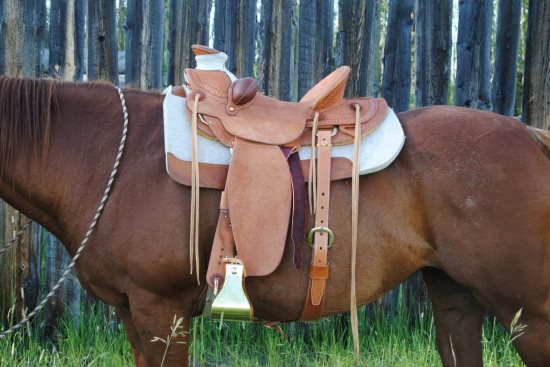
This is the 2013 saddle.
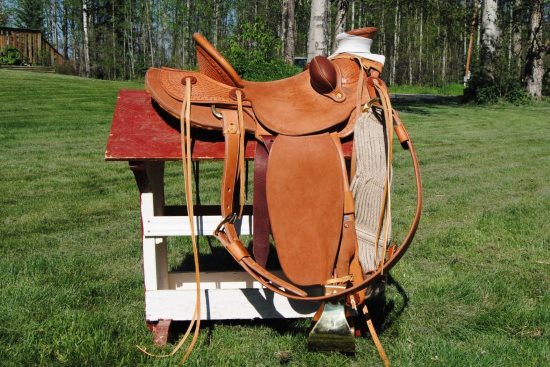
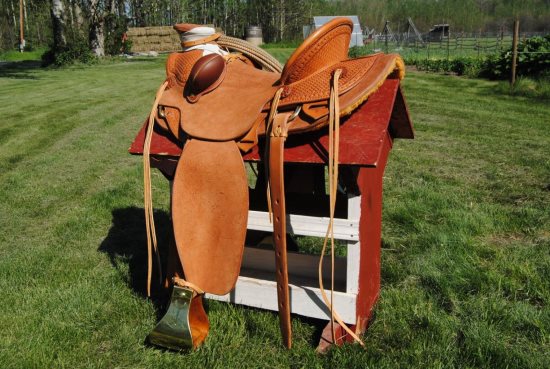
Learned a few things going through pictures to find the right ones to post. The biggest thing is that we have a LOT of pictures of trees on our computer...
